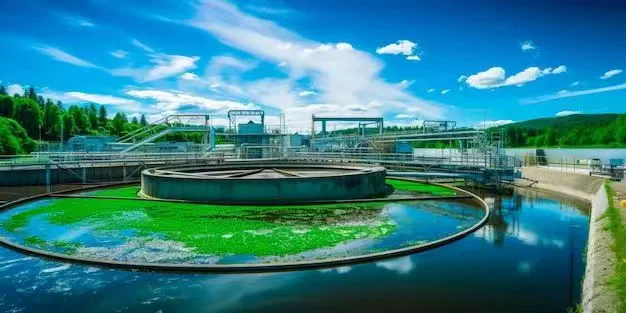In today’s evolving wastewater treatment industry, anaerobic reactors play a critical role in the initial degradation of organics.
Especially in A2/O systems and UASB reactors widely used for industrial effluents, any malfunction in the anaerobic stage may:
- ❌ Lower COD & ammonia removal efficiency
- ❌ Cause effluent non-compliance
- ❌ Increase overall project risks
Based on years of field practice, this article summarizes the 4 most common operational problems in anaerobic tanks, their mechanisms, and troubleshooting tips.
1️⃣ COD Abnormally High: Hydrolysis & Acidification Cause VFA Accumulation
📌 Observation: Effluent COD is higher than influent COD.
🔎 Cause:
- Presence of macromolecular organics → hydrolyzed into small molecules (e.g., VFAs), easily detected as COD.
- Some substances, normally non-oxidizable, may undergo partial oxidation under anaerobic conditions, increasing COD further.

2️⃣ Ammonia Nitrogen (NH₃-N) Unexpectedly Increases
📌 Observation: Effluent ammonia-N higher than influent.
🔎 Cause:
- Influent contains high organic nitrogen.
- Through ammonification, organic-N converts into ammonia nitrogen, raising NH₃-N concentration.
- This is a common by-product of anaerobic reactions.
3️⃣ pH Abnormally High: 3 Key Mechanisms to Check
📌 Observation: Anaerobic tank pH drifts upward.
🔎 Mechanisms:
- Ammonification 🧪: Organic-N → Ammonia-N, increasing alkalinity.
- Rapid VFA consumption ⚡: VFAs are quickly depleted, temporarily raising pH.
- Sulfate reduction by SRB 🦠: Sulfate → H₂S, which increases alkalinity.
⚠️ Note: These changes can be normal, but sudden/large fluctuations require checking influent composition & sludge activity.
4️⃣ COD Removal Efficiency Low: 4 Major Factors
📌 Observation: Poor COD removal.
🔎 Checklist:
- Influent conditions unsuitable ❄️: Low pH or low temperature reduces microbial activity.
- Sludge deficiency or poor quality 🟤: Can be improved by increasing sludge recycle or seeding with active sludge.
- Nutrient imbalance (C:N:P) ⚖️: Must be kept near 100:5:1 for stable performance.
- Insufficient HRT ⏱️: Small tank volume or hydraulic overload shortens contact time, lowering efficiency.

🔧 Technical Advice
A stable anaerobic system requires:
- Continuous monitoring 📊
- Timely adjustments 🔄
- Balanced influent conditions & sludge management
By understanding these typical problems & root causes, engineers can more accurately diagnose and fix issues in real projects.
📩 For complex operational troubleshooting, feel free to reach out to our technical team for tailored support.
